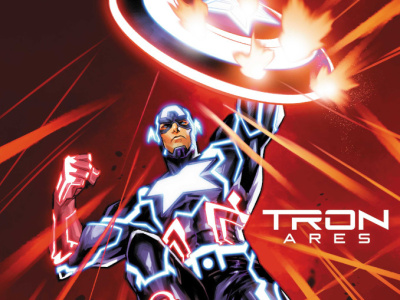
But the world of comic books is not the only venue for this revival of interest in the pop cultural history of the recent past -- the recently released Scooby-Doo film has passed the $100 million mark in just ten days of release (see 'Scooby Does'), and Hollywood moguls are climbing all over themselves to sign up vintage animated properties (see 'Fighting All Who Rob and Plunder').
The toy industry has also gotten into the act in a major way. Palisades Marketing has made older properties the focus of its 2002 line (see 'Palisades' Maturing Line Has Retro Tint'), while Diamond Select is producing toys based on the retro anime series Battle of the Planets (see 'Diamond Select Gears Up'). Hasbro is reviving G.I. Joe and expanding its Transformers line (see 'Licensing is Back At Hasbro'), while Mattel is bringing back He-Man and the Masters of the Universe (see 'Mattel Plays It Close To theVest').
The new medium of DVD is perfect for capturing multiple episodes of TV series, and companies like Rhino are making the most out of packaging vintage TV cartoons (see 'Retro Toon Update'). Inkworks is not just producing a set of trading cards based on the new Scooby-Doo live action film, but also doing a 'classic' series of cards in the fall based on the venerable animated series (see 'Inkworks Thinks Small').
In becoming the first of this summer's films to pass the $100 million dollar mark (Spider-Man & Attack of the Clones were released before the start of Hollywood's traditional summer season which begins June 1) the new Scooby-Doo film triumphed over a phalanx of bad reviews and enjoyed a success that eluded previous nostalgia-laden cartoon revivals such as Rocky & Bullwinkle and The Flintsones, which failed at the box office only a few years ago.
Why did Scooby succeed, and why are all these other nostalgia-tinged properties from the 1970s and 80s doing so well? Well, part of the answer lies in the fact that the generation that grew up on Scooby, Battle of the Planets, G.I. Joe, Transformers, and Kiss has established itself economically and does appear to have a fondness for the entertainments of their youth. But there are other trends in the current zeitgeist that reinforce the appeal of these vintage properties. Compared to the confusion and chaos of much of the twentieth century the eighties were a time of clear-cut 'truths' in an American society dominated by Ronald Reagan and his clear-cut worldview. Soviet communism may have been a formidable, militaristic, totalitarian foe, but as the cold war evolved into peaceful co-existence there was a predictable and safe quality about the rigid Soviet state, which whipped us regularly at the Olympics but couldn't make a decent refrigerator or computer. Today's murderous foes with their murky, anti-modern, quasi-religious agenda are disturbing in a way the Soviets' forests of ICBMs never were. Factor in increasingly intractable problems like global warming, and the simple delights of 1980s childhood entertainments shine like beacons to a safe harbor.
Success breeds imitation and eventually leads to the dilution of the original impulse, so not all the nostalgia-laden revivals that will be released over the next year or so are going to work, but enough already have to establish that this trend, which ICv2 pointed out over a year ago in just our second month of operation (see 'There's Gold in Them Thar Old Cartoons'), will have a substantial lifespan. Whatever its psychological underpinnings and in spite of the dangers of over-exploitation, this trend is not going away anytime soon. The quality of much of the comic art and toy sculpting associated with these revivals so far is very high, and it speaks to the passion that many of the artists involved have for these properties, which inspired them when they were growing up. Take for example Alex Ross's involvement with Top Cow's Battle of the Planets. As long as the artists involved in creating the modern versions of these vintage shows maintain their fervor for the properties involved, this trend can continue to prosper and grow.







